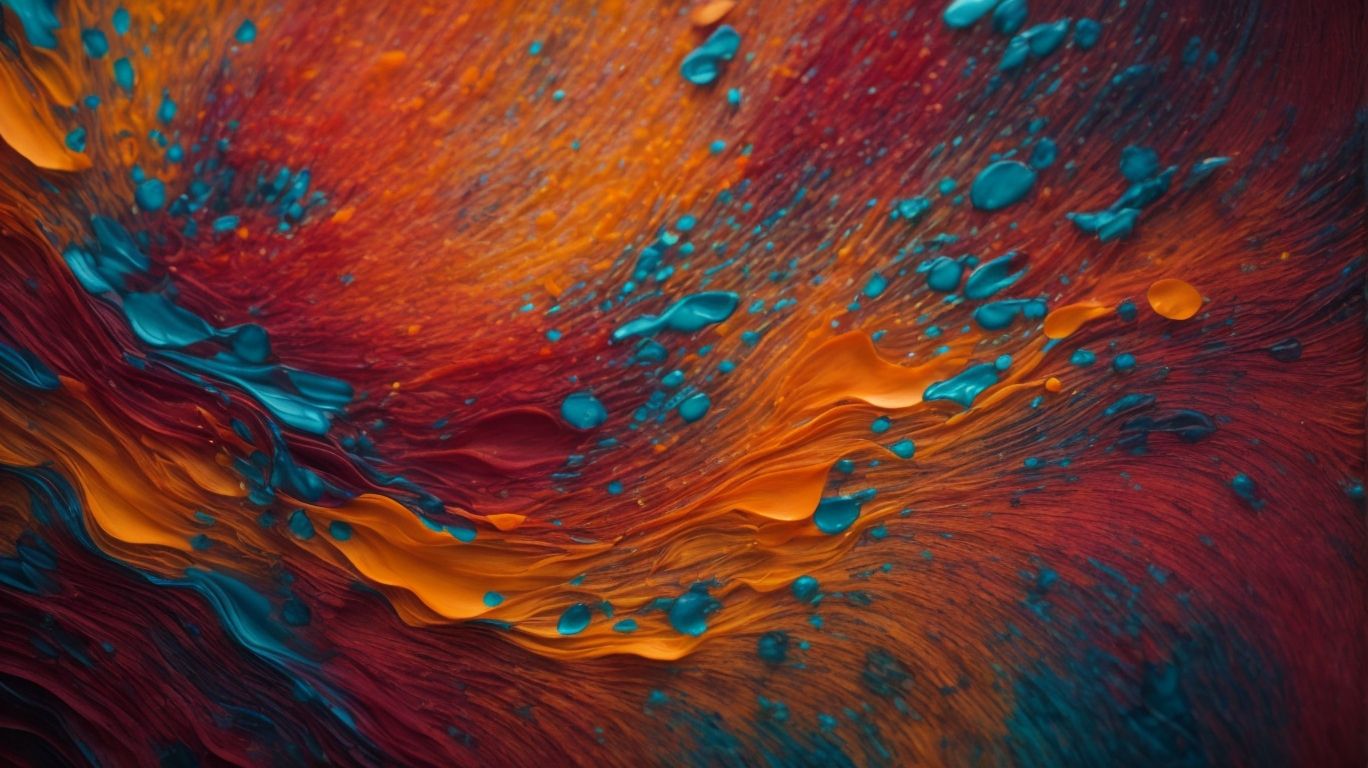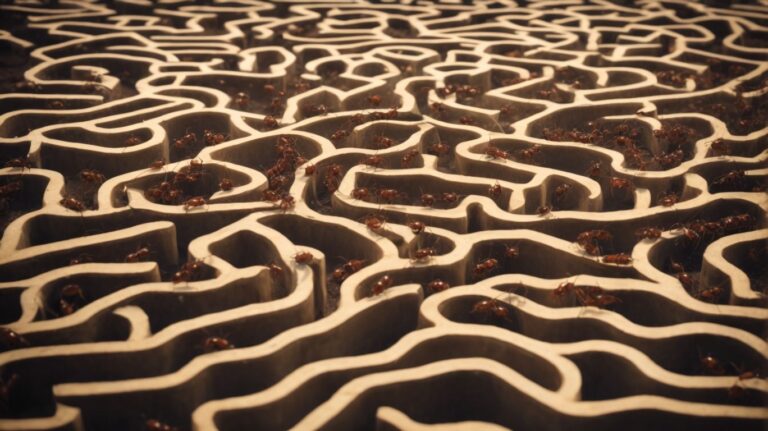Have you ever wondered about the fascinating relationship between art and psychology? From the ways in which art affects the brain to the various forms of art therapy, this article will explore the profound impact art can have on mental health.
We will delve into the different theories supporting art therapy and the settings where it is utilized, shedding light on how art can be a powerful tool for self-expression and healing. Join us on this journey of discovering the interconnectedness of art and psychology.
Contents
- 1 What Is the Relationship Between Art and Psychology?
- 2 How Does Art Affect the Brain?
- 3 What Are the Different Forms of Art Therapy?
- 4 How Can Art Be Used as a Tool for Self-Expression and Healing?
- 5 What Are the Psychological Theories That Support the Use of Art Therapy?
- 6 What Are the Different Settings Where Art Therapy Is Used?
- 7 Frequently Asked Questions
- 7.1 What is the interconnection between art and psychology?
- 7.2 How does art therapy use the interconnection between art and psychology?
- 7.3 What does research suggest about the interconnection between art and psychology?
- 7.4 How does the interconnection between art and psychology influence our perception of art?
- 7.5 What are some examples of the interconnection between art and psychology in practice?
- 7.6 How can understanding the interconnection between art and psychology benefit individuals?
What Is the Relationship Between Art and Psychology?
The relationship between art and psychology delves into the intricate connections between human emotions, cognitive abilities, and self-expression through artistic creations.
Art has the power to evoke a wide array of emotions, triggering responses that can range from joy and excitement to sadness and contemplation. This profound impact on emotional well-being is key to understanding how art can influence mental health positively. Empathy plays a significant role here, as it allows individuals to connect with the artist’s intention and experience art on a deeper level.
Regarding cognitive function, engaging with abstract art can stimulate critical thinking and creativity. The ambiguous nature of abstract art challenges the brain to interpret, analyze, and create meaning from non-standard visual cues, promoting cognitive flexibility and problem-solving skills.
How Does Art Affect the Brain?
Art has a profound impact on the brain, stimulating cognitive abilities, evoking emotions, and triggering neural pathways associated with creativity and aesthetic appreciation.
One of the intriguing aspects of how art influences the brain is through enhancing empathy. When exposed to different forms of artistic expression, individuals are often encouraged to put themselves in the shoes of others, fostering a deeper understanding of various perspectives. This process not only cultivates empathy but also promotes neuroplasticity, the brain’s ability to reorganize itself by forming new connections between neurons, thus boosting overall cognitive flexibility and emotional processing.
What Are the Benefits of Art on Mental Health?
Engaging in art can offer significant benefits for mental health, providing a pathway for emotional healing, self-discovery, and personal growth through artistic expression.
Artistic talent is not a prerequisite; anyone can experience the positive effects of art on mental well-being. Whether it’s painting, sculpting, writing, or music, the act of creation allows individuals to explore their inner thoughts and emotions, fostering a sense of mindfulness and self-awareness.
Art fosters human connection and social behavior by providing a platform for individuals to communicate their feelings and experiences with others. This shared creative experience can lead to a sense of belonging and community, reducing feelings of isolation and loneliness.
What Are the Different Forms of Art Therapy?
Art therapy encompasses various forms of creative interventions that utilize art as a therapeutic tool to address psychological issues and promote healing.
Visual art therapy involves the creation of visual art pieces as a means of expressing emotions and thoughts that may be difficult to verbalize. Music therapy, on the other hand, utilizes sounds and rhythms to evoke emotional responses and improve communication skills.
Dance therapy integrates movement and body awareness to promote self-expression and enhance physical and emotional well-being. Drama therapy uses role-playing and improvisation to explore and process emotions in a safe and creative environment.
Poetry/writing therapy allows individuals to express themselves through written words, tapping into the power of language and storytelling to process experiences and emotions.
Visual Art Therapy
Visual art therapy harnesses the power of painting, drawing, and sculpting to facilitate emotional expression, self-reflection, and psychological exploration.
Through the act of creating art, individuals can access deep-rooted emotions, memories, and thoughts that may be difficult to express verbally.
Engaging in artistic activities can help alleviate stress and anxiety, providing a non-verbal outlet for processing complex feelings.
Key figures such as Sigmund Freud recognized the value of art in uncovering the subconscious mind, leading to the integration of art into psychological therapies.
Art movements like Surrealism and Expressionism highlight the power of visual art to convey emotions and experiences in a raw and unfiltered manner.
Music Therapy
Music therapy involves the use of sound, rhythm, and melody to evoke emotions, promote relaxation, and enhance communication in therapeutic settings.
Through its interactive and engaging nature, music therapy has the power to tap into a deep well of human emotions. It stimulates the brain, triggering memories and enhancing memory recall. The empathetic qualities of music can create a safe space for individuals to explore and process their feelings. Artistic expression through music can improve social interactions, fostering connections and building bridges between individuals. The therapy sessions often involve group activities where participants can bond over shared musical experiences, promoting a sense of unity and community.
Dance/Movement Therapy
Dance/movement therapy integrates physical expression, body awareness, and kinesthetic empathy to help individuals connect with their emotions and inner experiences.
Through the power of movement, individuals can delve deep into their subconscious, expressing emotions that words alone may struggle to capture. Dance therapy taps into the artistic expression of the body, allowing for a unique form of self-discovery and communication. It offers a safe space for individuals to explore and release pent-up emotions, fostering emotional regulation and offering a sense of liberation. Group sessions enhance social bonding and empathy as participants engage in synchronized movements, fostering a shared sense of understanding and connection.
Drama Therapy
Drama therapy utilizes theatrical techniques, role-playing, and storytelling to explore emotional issues, foster empathy, and enhance interpersonal skills in a therapeutic context.
Through the use of theater and drama, individuals can step into different roles and scenarios, allowing them to gain insights into their own behaviors and emotions. This experience of embodying various characters helps in developing empathy by understanding different perspectives and feelings, ultimately enhancing communication skills and building self-awareness. Influential figures like Willem de Kooning have recognized the power of art and drama in expressing complex emotions and fostering connections with others. The essence of drama therapy lies in the ability to facilitate deeper human connections and emotional understanding, paving the way for personal growth and healing.
Poetry/Writing Therapy
Poetry/writing therapy taps into the expressive power of language, symbolism, and narrative to delve into philosophical themes, aesthetic attitudes, and personal reflections.
By engaging with creative writing and poetry, individuals can unlock their subconscious thoughts and feelings that may otherwise be difficult to articulate. Through the process of describing emotions and experiences in verse or prose, individuals gain a deeper understanding of themselves and their internal struggles.
Historically, figures like William James, the father of American psychology, emphasized the therapeutic benefits of self-expression through writing. In the context of artistic movements such as Romanticism or Surrealism, poets and writers have leveraged the power of language to explore the depths of the human psyche and facilitate healing.
How Can Art Be Used as a Tool for Self-Expression and Healing?
Art serves as a powerful tool for self-expression and healing, allowing individuals to communicate complex emotions, process trauma, and embark on journeys of personal growth.
Through the creation and appreciation of aesthetic artifacts, people tap into their artistic talent to convey what words often cannot capture. Each stroke of the brush, sculptural form, or musical composition becomes a portal to the innermost chambers of the soul. By externalizing internal experiences onto a canvas or through a performance, individuals can confront challenges, gain new perspectives, and find catharsis through the transformative power of creative expression.
What Are the Psychological Theories That Support the Use of Art Therapy?
Several psychological theories underpin the practice of art therapy, including Gestalt theory, psychodynamic theory, cognitive-behavioral theory, and humanistic theory.
Each theory contributes unique perspectives to the field of art therapy, shaping how therapists approach the healing process. Gestalt theory emphasizes the importance of the present moment and the holistic experience, guiding art therapists to focus on the client’s current feelings and thoughts during the artistic creation. Psychodynamic theory delves into the unconscious mind, allowing clients to express unconscious emotions through their artwork. Cognitive-behavioral theory concentrates on changing negative thought patterns and behaviors through art interventions.
Humanistic theory, championed by figures like Carl Rogers, prioritizes the individual’s self-actualization and personal growth, fostering a supportive environment where clients can explore their creativity without judgment. Ellen Winner’s research intertwines with these approaches, shedding light on the cognitive processes involved in artistic creation and the psychological benefits of engaging in art-making activities. The combination of these theories widens the scope of art therapy applications in various mental health contexts, providing diverse tools for therapists to help clients navigate their emotional landscapes.
Gestalt Theory
Gestalt theory posits that individuals perceive and experience artworks as unified wholes, emphasizing the importance of holistic perception, aesthetic unity, and psychological context.
This theory, initially developed in psychology, is instrumental in shaping how viewers engage with art on a deeper level. One of the key principles underlying Gestalt theory is figure-ground relationships, where the brain differentiates between the foreground (figure) and background (ground) elements within an artwork. Through this process, viewers are able to discern the main subject or focal point, which significantly impacts their overall interpretation of the piece.
Closure is another significant concept derived from Gestalt theory, suggesting that individuals have a tendency to fill in gaps or perceive incomplete shapes as whole. This principle greatly influences how viewers make sense of abstract or fragmented artworks, such as those found in the works of renowned artists like Max Ernst. Ernst, a prominent figure in the Surrealist movement, often employed surreal and dreamlike imagery, inviting viewers to engage in a process of mental completion to comprehend his artworks.
The theory of visual organization, central to Gestalt principles, explains how viewers naturally organize visual elements into cohesive and meaningful patterns. This organizational process guides perceptions of symmetry, similarity, proximity, and continuity within art, impacting how individuals relate to the composition and structure of a piece. Various artistic movements, including Cubism and Abstract Expressionism, have drawn upon Gestalt principles to challenge conventional perspectives and engage viewers in new ways.
Psychodynamic Theory
Psychodynamic theory, rooted in the works of Sigmund Freud, explores how unconscious thoughts, emotions, and conflicts manifest in artistic creations, guiding therapeutic interventions in art therapy.
The concept of repression, frequently addressed in psychodynamic theory, plays a significant role in art therapy practices. Artistic expressions often reveal repressed memories or emotions that the individual may not be fully aware of consciously, allowing for exploration and processing in a therapeutic setting. Symbolism, another key aspect, enables individuals to convey complex emotions and experiences through metaphorical representations in their artwork, shedding light on their inner world.
Cognitive-Behavioral Theory
Cognitive-behavioral theory in art therapy emphasizes the role of cognition, perception, and behavior in shaping emotional responses, self-perceptions, and creative problem-solving.
Understanding how creativity intersects with cognitive function is crucial in guiding therapeutic interventions that assist individuals in exploring and altering negative thought patterns and maladaptive behaviors. This approach often involves cognitive restructuring techniques to challenge and replace unhelpful beliefs with more adaptive thoughts, promoting healthier emotional responses and improving overall well-being.
Behavior modification strategies within art therapy sessions aim to reinforce positive behaviors and provide opportunities for individuals to practice new coping skills and behavioral patterns. These techniques not only enhance self-awareness and self-regulation but also encourage personal growth and resilience.
Humanistic Theory
Humanistic theory in art therapy emphasizes the individual’s self-actualization, personal growth, and capacity for creative expression as essential aspects of psychological well-being.
The core principles of this theory revolve around the belief that every person has an innate drive towards growth and fulfillment. By focusing on the client’s unique experiences, emotions, and perspectives, art therapy aims to facilitate emotional healing and foster self-awareness. Through the therapeutic process, individuals gain insight into their inner world, uncovering hidden truths and confronting challenging emotions with creativity as a healing tool. This approach values authenticity and the genuine expression of one’s thoughts and feelings, promoting self-discovery and personal enablement. The therapeutic value of artistic exploration lies in its ability to transcend verbal communication, allowing individuals to communicate and process complex emotions through visual representation.
What Are the Different Settings Where Art Therapy Is Used?
Art therapy finds applications in diverse settings, including hospitals, schools, mental health clinics, and community centers, offering therapeutic interventions for individuals of all ages and backgrounds.
In healthcare, it helps patients express emotions and reduce stress through creative outlets. Within educational settings, it boosts cognitive abilities and fosters self-esteem. In rehabilitation, art therapy aids in physical and emotional healing post-injuries or traumas. In community support initiatives, it promotes social connections and enables marginalized populations.
Hospitals and Healthcare Facilities
Art therapy programs in hospitals and healthcare facilities provide patients with creative outlets for emotional expression, stress relief, and coping strategies during medical treatments.
Through engaging in artistic activities, individuals can explore and communicate their feelings in a non-verbal manner, often leading to a deeper understanding of their emotions and experiences. This form of emotional healing can be particularly beneficial for patients dealing with trauma, chronic illness, or mental health issues. Art therapy interventions have been shown to help reduce anxiety, improve mood, and enhance overall well-being.
Schools and Educational Institutions
Art therapy programs in schools and educational institutions promote creativity, emotional literacy, and social skills development among students, fostering holistic well-being and self-expression.
Through art therapy, students are encouraged to engage in various forms of artistic expression, which can enhance their cognitive abilities and critical thinking skills. This approach not only allows for creativity to flourish but also nurtures a sense of mindfulness and self-awareness. By integrating art into the learning process, individuals can develop a deeper understanding of their emotions and learn how to regulate them more effectively, leading to improved emotional intelligence and overall well-being.
Mental Health Clinics and Rehabilitation Centers
Art therapy services in mental health clinics and rehabilitation centers offer individuals therapeutic interventions for managing mental health disorders, processing trauma, and fostering emotional well-being.
One of the key benefits of engaging in art therapy is its ability to enhance cognitive function. Through creative processes like painting, drawing, and sculpting, individuals can develop problem-solving skills, improve attention span, and boost memory. Moreover, artistic expression provides a non-verbal outlet for individuals to communicate their emotions, reducing feelings of anxiety and depression.
Private Practice and Community Centers
Art therapy practices in private settings and community centers cater to individuals seeking personal growth, self-exploration, and creative outlets for enhancing psychological well-being.
Through the medium of art therapy, individuals can express themselves in ways that might be challenging through traditional talk therapy. This form of therapy often incorporates the use of abstract art forms, encouraging clients to explore their emotions, thoughts, and experiences in a non-verbal manner. By engaging in artistic expression, individuals can tap into their inner creativity, fostering a deeper connection with their emotions and understanding themselves better.
Frequently Asked Questions
What is the interconnection between art and psychology?
The interconnection between art and psychology is the study of how art and the creative process can impact and be impacted by psychological factors, such as emotions, thoughts, and behaviors.
How does art therapy use the interconnection between art and psychology?
Art therapy is a form of therapy that uses the interconnection between art and psychology to promote emotional healing, self-expression, and personal growth through the creation of art.
What does research suggest about the interconnection between art and psychology?
Research suggests that creating art can have therapeutic benefits for individuals, such as reducing stress and anxiety, improving mood, and increasing self-awareness.
How does the interconnection between art and psychology influence our perception of art?
The interconnection between art and psychology can influence our perception of art by providing insight into the underlying emotions, thoughts, and experiences that may have influenced the creation of the artwork.
What are some examples of the interconnection between art and psychology in practice?
Examples of the interconnection between art and psychology in practice include art therapy, using art as a tool for self-discovery and reflection, and studying the psychological effects of viewing and creating different types of art.
How can understanding the interconnection between art and psychology benefit individuals?
Understanding the interconnection between art and psychology can benefit individuals by providing a deeper understanding of their own emotions and experiences, promoting self-expression and self-awareness, and facilitating personal growth and healing.




